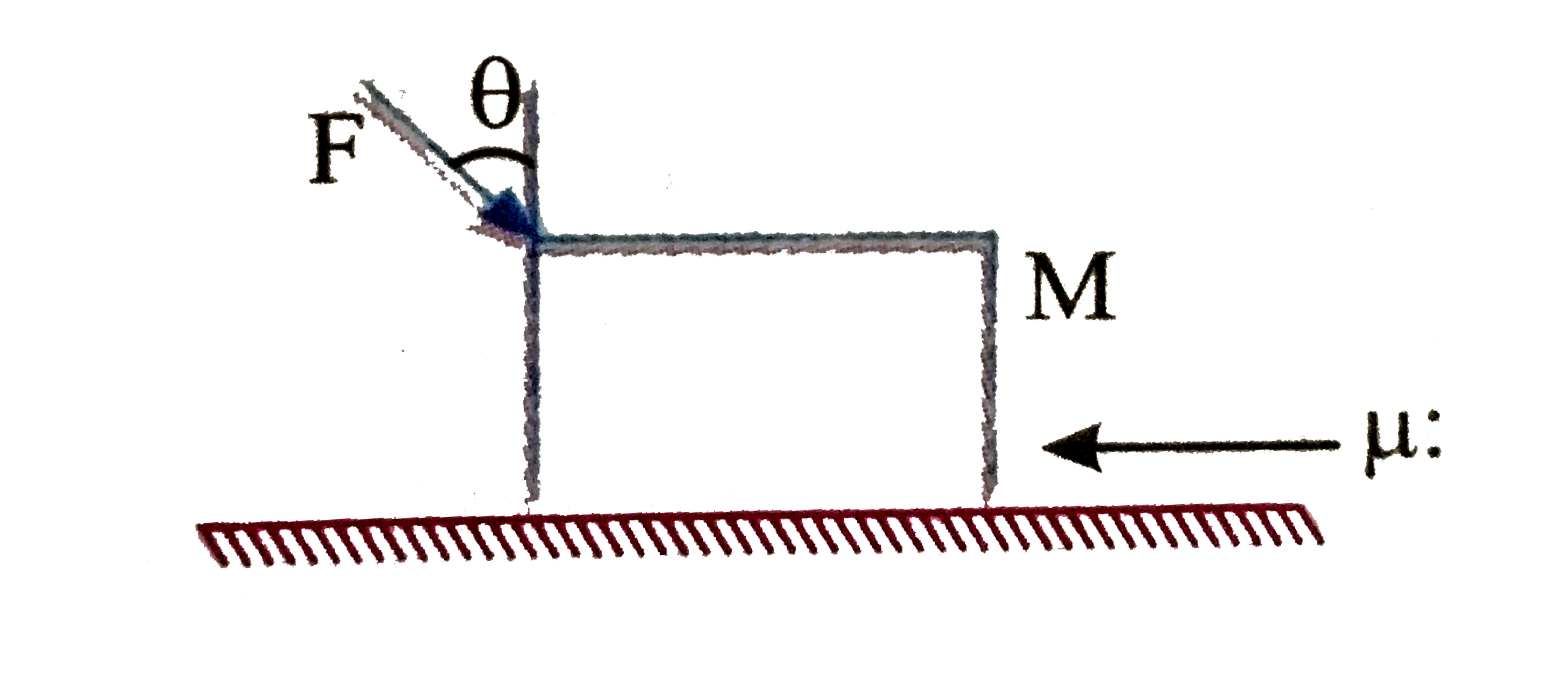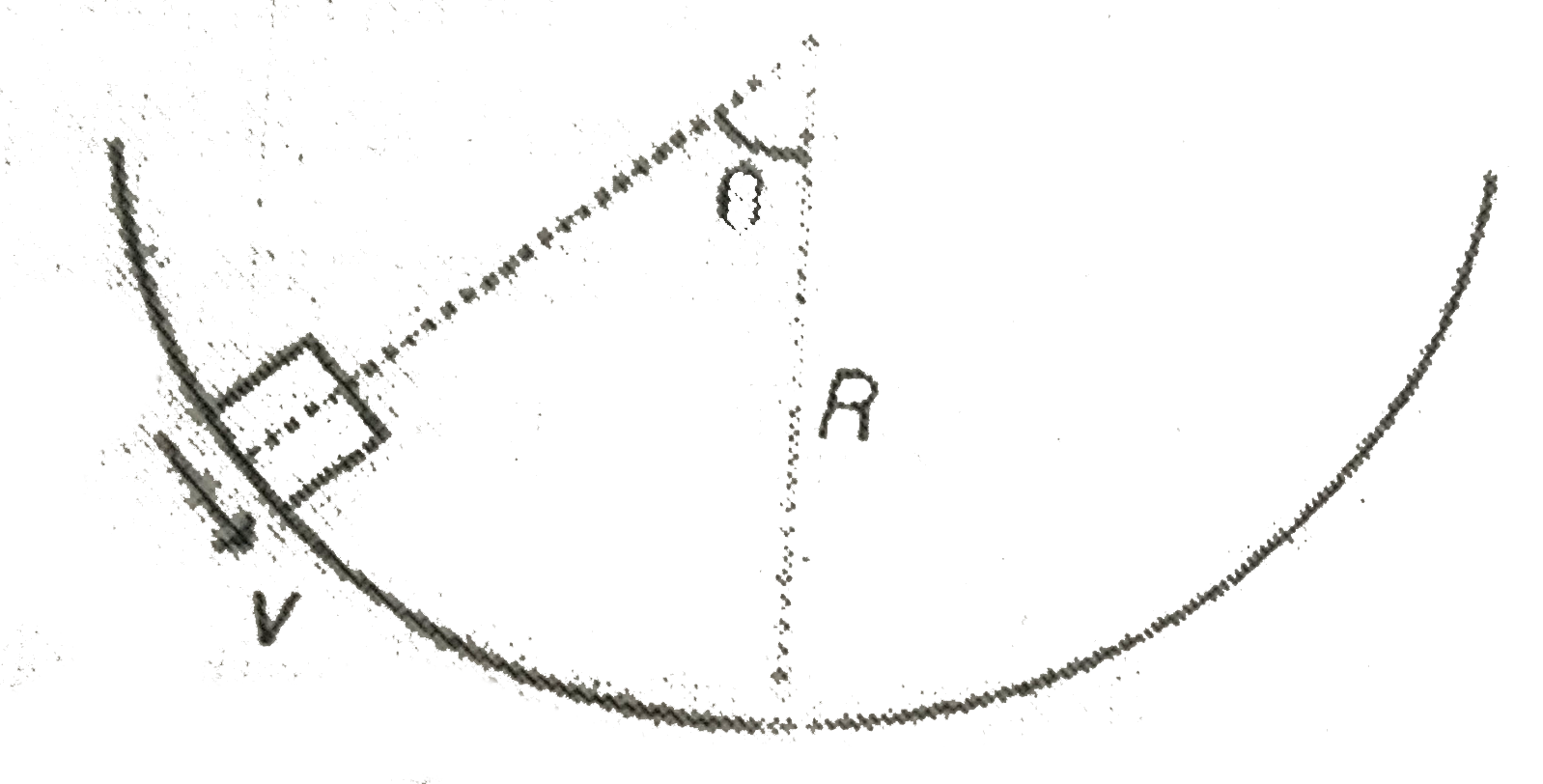A small collar of mass m = 100 g slides over the surface of a horizontal circular rod of radius R = 0.3 m. The coefficient of friction between the rod and the collar is μ=0.8. Find the angle made with vertical by the force applied by the rod on the collar when speed of the collar is V = 2 m/s.

The correct Answer is:θ=cos−1(3√41)
Step by step video, text & image solution for A small collar of mass m = 100 g slides over the surface of a horizontal circular rod of radius R = 0.3 m. The coefficient of friction between the rod and the collar is mu = 0.8. Find the angle made with vertical by the force applied by the rod on the collar when speed of the collar is V = 2 m/s. by Physics experts to help you in doubts & scoring excellent marks in Class 11 exams.
Topper's Solved these Questions
Similar Questions
A rod of mass M and length L lies on an incline having inclination of θ=37∘. The coefficient of friction between the rod and the incline surface is μ=0.90. Find the tension at the mid point of the rod.
View SolutionA collar having a mass M and negligible size slides over the surface of a horizontal circular rod for which the coefficient of kinetic friction is μk If the colar is given a speed v1 and then released at θ=0∘, determine how far d it slides on the rod before coming to rest. Given, M=0.75kg,r=100mm,μk=0.3,g=9.81m/s2,v1=4m/s.
 View Solution
View Solution
Knowledge Check
- Question 1 - Select One
A block of mass 50 kg slides over a horizontal distance of 1m. If the coefficient of friction between their surface is 0.2, then work done against friction is (take g=9.8m/s2) :
A98 JB72 JC56 JD34 J - Question 2 - Select One
A boy of mass 40 kg is climbing on a vertical pole at a constant speed. If the coefficient of friction between his palms and the pole is 0.8 and g = 10m/s2, the horizontal force that he is applying on the pole is
A300 NB400 NC500 ND600 N - Question 3 - Select One or More
In the situration shown in the figure the friction coefficient between M and the horizontal surface is μ. The force F is applied at an angle θ with vertical. The correct statements are
 AIf θ>tan−1μ the block cannot be pushed forward for any value of FBIf θ<tan−1μ the block cannot be pushed forwards for any value of FCAs θ decreases the magnitude of force needed to just push the block M forward increasesDNone of these
AIf θ>tan−1μ the block cannot be pushed forward for any value of FBIf θ<tan−1μ the block cannot be pushed forwards for any value of FCAs θ decreases the magnitude of force needed to just push the block M forward increasesDNone of these
A body of mass 100 g is made just to slide on a rough surface by applying a force of 0.8 N. Find the coefficient of friction. Take g=10ms2.
View SolutionTwo blocks of Masses M and 2M are connected by a spring of stiffness k .The coefficient of friction between the blocks and the surface is mu Find the minimum constant force F to be applied to 2m in order to slide the mass M .
View SolutionIf the coefficient of friction between M and the inclined surfaces is μ=1/√3 find the minimum mass m of the rod so that the of mass M=10kg remain stationary on the inclined plane
 View Solution
View SolutionA small bead of mass m is given an initial velocity of magnitude v0 on a horizontal circular wire. If the coefficient of kinetic friction is μk, determine the distance travelled before the collar comes to rest.
View SolutionA block of mass m=1kg has a speed v=4m/s at θ=60∘ on a circular track of radius R = 2 m as shown in figure. Size of the block is negligible. Coefficient of friction between block and the track is μ=0.5. The force of friction between the two is
 View Solution
View Solution

